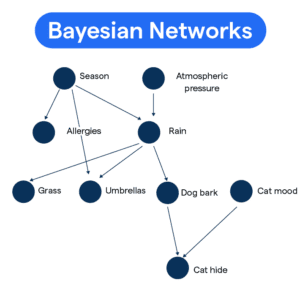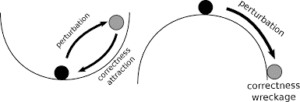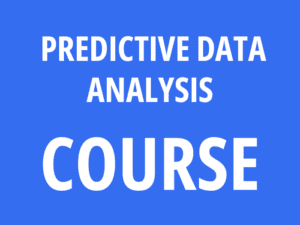“Without data you are just another person with another opinion.” ~ William Edward Deming
Setting the Scene: The Westgate Tunnel Project
In 2018, the Westgate Tunnel project buzzed with activity. The air, thick with the scent of fresh earth and machinery, mingled with the tension that hung around the site like a heavy fog. The sound of road-header machines reverberated through the ground, echoing the urgency and ambition behind the project.
On cold mornings, I watched construction workers huddled together, clutching warm coffee cups in their hands. Their breaths, visible in the crisp air, mingled with laughter, creating a sense of community.
The pressure to perform
The pressure to increase the efficiency of these crucial machines in tunnel construction was palpable, as if the very walls whispered tales of laborers past and dreams of a better-connected future. I was brought in to analyze operational data and find ways to boost productivity.
The site director, a seasoned expert with years of hands-on experience, held a theory he deemed unquestionable:
“Guess what? It’s common sense: people work better in daylight. You’ll see the numbers validate me.”
But I wasn’t there to simply confirm what seemed obvious. That day, my job was to let the data speak.
Is your business stuck in quicksilver’s grip?
The trap of gut feelings
- How often have you relied on an idea that felt right—an assumption so obvious that no one ever questioned it?
- Yes, gut feelings, like quicksilver, shimmer with certainty in one moment but then—when tested—shift and reveal something entirely different.
It’s a paradox we all know too well:
- We trust our instincts, yet those instincts can lead us astray.
- Especially in companies built on culture and tradition, quicksilver-like assumptions can create real blind spots.
Your team, composed of individuals from diverse backgrounds, brings a wealth of perspectives that can’t always be captured by gut alone. Yet how often do we pause to truly listen—to test those long-held beliefs with data-driven insights?
The power of Data-Driven insights
You deserve more than instinct; you deserve:
- Data-driven insights that reflect the richness of experiences within your organization.
- The potential to unleash the full power of your team through informed decisions.
When you embrace this, your business moves forward, grounded in truth, understanding, and inclusion.
Proving the power of Data over Quicksilver Instincts
Analyzing the Data
As I examined the data and interviewed workers from both day and night shifts, I knew this was more than just crunching numbers.
- I’ve spent years in management, leading teams, and navigating the pressures of balancing operational demands while fostering a diverse, inclusive, and high-performing environment.
- Yes, I’ve felt the stress many of you face.
I’ve encountered the frustration of seeing well-intended ideas caught in corporate bureaucracy.
“It’s the irony of our time: we think we know what works, yet we often find ourselves mired in the very assumptions we believe are solid.”
But I learned something critical: while gut feelings can be useful, they’re not always enough. You must rely on data, facts, and valuable insights to truly grasp what’s happening on the ground.
The moment of truth
When I completed the analysis, the results were clear:
- There was no statistical difference between the day and night shifts.
- The director’s long-held belief—a theory that had influenced decision-making for years—was wrong.
I wasn’t surprised. This is common in large organizations: it’s easy to revert to what feels familiar.
- After all, isn’t it comforting to rely on what we think we know?
- But that’s also where businesses can get stuck.
In today’s fast-paced, data-driven world, relying solely on intuition can be risky.
Taking action
- I’m guessing you haven’t got around to making a decision yet, have you?
- Unchecked assumptions can hinder your business—both in terms of results and in creating an inclusive environment where every team member’s voice is valued.
This challenge is about more than proving or disproving a theory; it’s about unlocking new ways of thinking—ensuring your team feels heard and supported by data. Because that’s how real, sustainable change happens in organizations like yours.
Turning Assumptions into Actionable Insights
The Reaction
When the data arrived, the site director took the news in stride:
“Looks like I’ve been wrong all this time,” he said with a grin. “Good thing we’ve got the data to direct us.”
And that’s the point:
- Untested assumptions can limit your business’s potential.
- It’s not about being right or wrong; it’s about being open to new perspectives, grounded in facts, and working together to challenge the status quo.
Imagine the Alternatives
- If you continue to rely solely on quicksilver instincts, what opportunities might you miss?
- What potential could slip through your fingers?
Now, imagine what your business could accomplish if you replaced gut feelings with insights—insights driven by data and enriched by the unique experiences of your team.
How open-minded are you to reaching out for more details on our AI-Driven Predictive Data Analysis training course(Link to course)? I go over this in much more detail, where we delve into techniques for embedding these insights into daily practice.
Don’t miss out on this opportunity to elevate your organization! I bet you are a bit like me, eager to improve and ready to make informed decisions. Because there’s no way to capture all of this in a single blog post, I’m offering one-on-one consultancy to support you in making your business thrive on data-driven insights, inclusivity, and innovation.
Further links:








